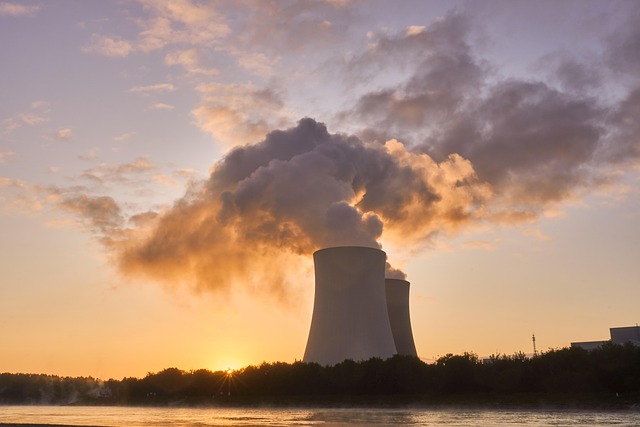
Licensing Process For Nuclear Installations
Introduction
The licensing process for nuclear installations is a critical aspect of ensuring the safety and reliability of nuclear power generation. This process is governed by the Nuclear Regulatory Commission (NRC) in the United States, which oversees the construction and operation of nuclear power plants. The NRC's rigorous review and approval mechanisms are designed to protect public health and safety while facilitating the development of nuclear energy as a viable power source.
Overview of the Licensing Process
The licensing process for nuclear installations typically involves several key steps, which can be categorized under two main parts of the NRC regulations: Part 50 and Part 52. Each part outlines specific requirements and procedures that must be followed by prospective licensees.
Part 50 Licensing
Part 50 of the NRC regulations pertains to the licensing of nuclear reactors. Under this framework, applicants must submit a comprehensive application that includes detailed information about the proposed facility, its design, and its operational plans. The process generally includes the following stages:
- Pre-Application Consultation: Before submitting a formal application, potential licensees are encouraged to engage in pre-application consultations with the NRC staff. This step allows for preliminary discussions regarding the proposed project and helps identify any potential issues early in the process.
- Application Submission: The formal application must include technical specifications, safety analyses, and environmental assessments. The NRC requires extensive documentation to ensure that all safety and regulatory requirements are met.
- Safety Review: The NRC conducts a thorough safety review of the application, which includes evaluations of the reactor design, operational safety measures, and emergency preparedness plans. This review is critical in determining whether the proposed facility can operate safely.
- Public Involvement: The licensing process includes opportunities for public comment and involvement. Public hearings may be held to allow stakeholders to express their views and concerns regarding the proposed nuclear installation.
- Final Decision: After completing the review and considering public input, the NRC makes a final decision on the application. If approved, the licensee is granted permission to construct and operate the nuclear facility.
Part 52 Licensing
Part 52 offers alternative licensing options that can streamline the process for certain applicants. This part includes provisions for Early Site Permits (ESPs) and Certified Standard Designs. The key features of Part 52 include:
- Early Site Permits: ESPs allow applicants to obtain approval for a reactor site without specifying the design of the reactor(s) that could be built there. This flexibility can expedite the overall licensing timeline.
- Certified Standard Designs: Applicants can utilize pre-approved designs that have undergone rigorous review. This approach reduces the need for extensive safety evaluations for each new application, as the designs have already been certified by the NRC.
Role of the Advisory Committee on Reactor Safeguards
An essential component of the licensing process is the involvement of the Advisory Committee on Reactor Safeguards (ACRS). This independent group provides expert advice to the NRC on reactor safety matters. The ACRS reviews each application and conducts meetings with the applicant and NRC staff at various stages of the review process. Their insights are invaluable in ensuring that safety considerations are thoroughly addressed.
Antitrust Reviews
In addition to safety evaluations, prospective licensees must also submit information for antitrust reviews of the proposed plant. This requirement ensures that the construction and operation of the nuclear facility do not create monopolistic practices or unfair competition in the energy market. The NRC assesses the potential impact of the proposed plant on market dynamics and competition.
Conclusion
The licensing process for nuclear installations is a complex and multi-faceted procedure designed to ensure the safety and reliability of nuclear power generation. By adhering to the stringent requirements set forth by the NRC, prospective licensees can navigate the regulatory landscape effectively. The involvement of the ACRS and the emphasis on public participation further enhance the integrity of the process, ultimately contributing to the responsible development of nuclear energy.

















 Qualifiers Europe
Qualifiers Europe 
 Health
Health  Fitness
Fitness  Lifestyle
Lifestyle  Tech
Tech  Travel
Travel  Food
Food  Education
Education  Parenting
Parenting  Career & Work
Career & Work  Hobbies
Hobbies  Wellness
Wellness  Beauty
Beauty  Cars
Cars  Art
Art  Science
Science  Culture
Culture  Books
Books  Music
Music  Movies
Movies  Gaming
Gaming  Sports
Sports  Nature
Nature  Home & Garden
Home & Garden  Business & Finance
Business & Finance  Relationships
Relationships  Pets
Pets  Shopping
Shopping  Mindset & Inspiration
Mindset & Inspiration  Environment
Environment  Gadgets
Gadgets  Politics
Politics 